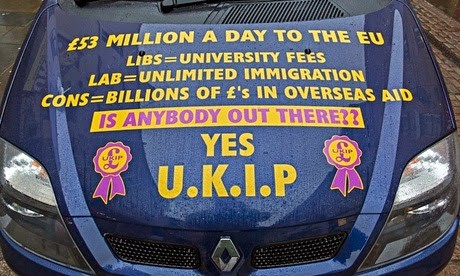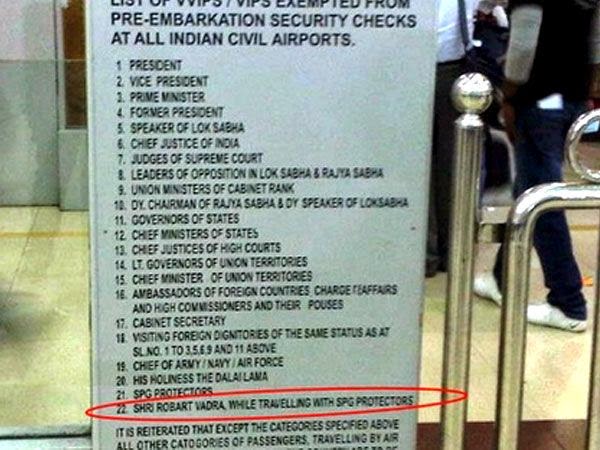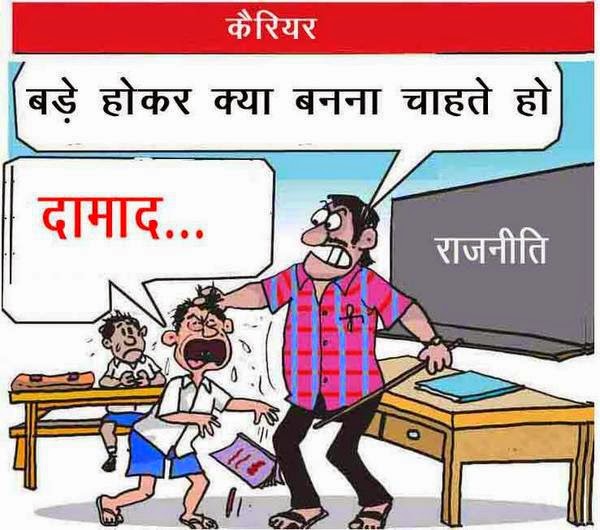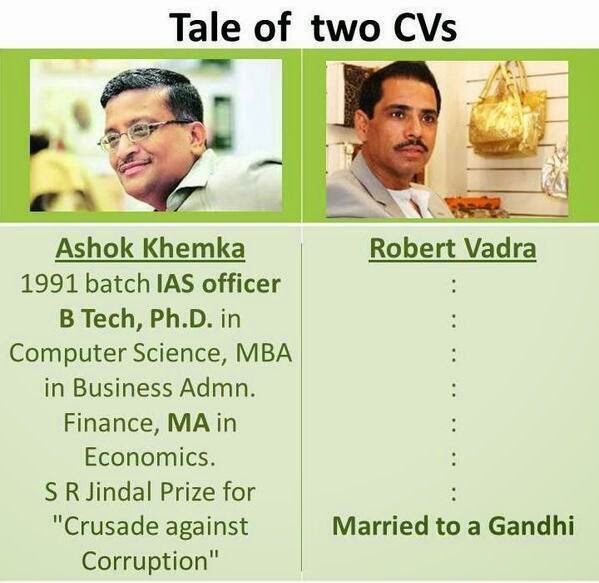Not
many modern adventures, at least of the physical, peaceable kind, ever
achieve the status of allegory. One was, of course, that
ultimate feat of exploration, that giant step for all mankind, the
arrival of Apollo 11 upon the moon. The other was the first ascent of Mount Everest.
…
It was allegorical in many senses.
The mountain stood on one of the earth’s frontiers, where the Himalayan
range separates the Tibetan plateau from the vast Indian plains below.
The adventure was symbolically a last earthly adventure, before
humanity’s explorers went off into space. The expedition that first
climbed Everest was British, and a final flourish of the British Empire,
which had for so long been the world’s paramount power. And as it
happened, the news of its success reached London, the capital of that
empire, on the very morning a new British queen, Elizabeth II, was being
crowned in Westminster Abbey. Almost everything meant more than it had a
right to mean, on Everest in 1953.
…
It did not always seem so at the
time. When those two men came down from the mountaintop, all one of them
said was: “Well, we’ve knocked the bastard off.”
…
The mountain was bang on the line
between Tibet and Nepal, two of the world’s most shuttered states, but
during the 19th century the British, then the rulers of India, had
regarded them as more or less buffer states of their own empire, and had
seldom encouraged exploration.
….
Everest had first been identified and
measured from a distance, when a surveyor working far away in Dehra Dun,
in the Indian foothills, had realized it to be the highest of all
mountains, and in 1856 it had been named after Sir George Everest,
former surveyor general of British India. It was known to be holy to the
people living around it, it looked celestial from afar, and so it became
an object of tantalizing mystery, an ultimate geographical presence.
…
Nobody tried to climb it—certainly
not the Sherpa people who lived at its foot—until 1921, when a first
British expedition was allowed to have a go. Between the two world wars
five other British attempts were made. All went to Everest via Tibet,
attacking the northern side of the mountain, but after World War II,
Tibet was closed to foreigners, and for the first time climbers
approached the mountain from the south, in Nepal. By then the British
Raj had abdicated, and in 1952 a Swiss expedition was the first to make a
full-scale attempt from the Nepali side. It failed (but only just). So
there arose, in the following year, a last chance for the British, as
their empire lost its vigor, its power and its purpose, to be the first
on top.
…
The empire was fading not in
despair, but in regret and impoverishment. The British no longer wished
to rule the world, but they were understandably sad to see their
national glory diminished. They hoped that by one means or another their
influence among the nations might survive—by the “special relationship”
with the United States, by the genial but somewhat flaccid device of
the Commonwealth, or simply by means of the prestige they had
accumulated in war as in peace during their generations of supremacy.
When in 1952 the ailing King George VI died, they pinned their hopes of
revived fortunes upon his daughter, the future Queen Elizabeth II, who
would accede to the throne in June of the following year. All was not
lost! It might be the start, trumpeted the tabloids, of a New
Elizabethan Age to restore the dashing splendors of Drake, Raleigh and
the legendary British sea dogs.
…
With this fancy at least in the
backs of their minds, the elders of the Royal Geographical Society (RGS)
in London, who had organized all the previous British expeditions to
Everest, made their plans for a final grand-slam assault upon the
mountain. The British had long thought that if it was not exactly their
right to be the first on the top of the world, it was in a way their
duty. Everest wasn’t in the British Empire, but it had been within a
British sphere of influence, as the imperialists liked to say, and so
they considered it a quasi-imperial peak. As early as 1905, Lord Curzon,
the inimitably imperial viceroy of India, had declared it “a reproach”
that the British had made no attempt to reach that summit of summits;
nearly half a century later the British public at large would have been
ashamed if some damned foreigners had beaten them to it.
…
So it was an emblematically powerful
expedition that the RGS sponsored this time. It had a strong military
element—most of its climbers had served in the armed forces. Most had
been to one of the well-known English private schools; several were at
Oxford or Cambridge. Two were citizens of that most loyally British of
the British dominions, New Zealand. One was from Nepal, and therefore
seemed a sort of honorary Briton.
Nearly all of them had previous
Himalayan experience, and professionally they included a doctor, a
physicist, a physiologist, a photographer, a beekeeper, an oil company
executive, a brain surgeon, an agricultural statistician and a
schoolmaster-poet—a poetic presence was essential to the traditional
ethos of British mountain climbing. Astalwart and practiced company of
Sherpa mountain porters, many of them veterans of previous British
climbing parties, was recruited in Nepal. The expedition was, in short,
an imperial paradigm in itself, and to complete it a reporter from the
LondonTimes, in those days almost the official organ of
Britishness in its loftiest measures, was invited to join the expedition
and chronicle its progress.
….
The leader of this neo-imperial
enterprise was Col. John Hunt, King’s Royal Rifle Corps, a distinguished
mountaineer, one of Montgomery’s staff officers in World War II, and an
old India hand. The reporter from The Times was me.
….
Three men, in the end, came to
dominate the exploit. Hunt himself was the very incarnation of a leader,
wiry, grizzled, often wry and utterly dedicated. Whatever he was asked
to do, it seemed to me, he would do it with earnest and unquenchable
zeal, and more than anyone else he saw this particular task as something
much grander than a sporting event. As something of a visionary, even a
mystic, he saw it as expressing a yearning for higher values, nobler
summits altogether. He might have agreed with an earlier patron of
Everest expeditions, Francis Younghusband of the RGS, who considered
them pilgrimages—“towards utter holiness, towards the most complete
truth.” Certainly when Hunt came to write a book about the adventure, he
declined to talk about a conquest of the mountain, and simply called it
The Ascent of Everest.
…
The second of the triumvirate was
Tenzing Norgay, the charismatic leader of the Sherpas with the
expedition, and a famously formidable climber—he had climbed high on the
northern flank of Everest in 1938, on the southern flank in 1952, and
knew the mountain as well as anyone. Tenzing could not at that time read
or write, but his personality was wonderfully polished. As elegant of
manner as of bearing, there was something princely to him. He had never
set foot in Europe or America then, but in London later that year I was
not at all surprised to hear a worldly man-about-town, eyeing Tenzing
across a banquet table, say how good it was to see that “Mr. Tenzing
knew a decent claret when he had one.” When the time came for Hunt to
select the final assault parties, the pairs of climbers who would make
or break the expedition, he chose Sherpa Tenzing for one of them partly,
I am sure, for postimperial political reasons, but chiefly because he
was, as anyone could see, the right man for the job.
….
His companion to the summit was one
of the New Zealanders, emphasizing that this was a British expedition in
the most pragmatic sense—for in those days New Zealanders, like
Australians and even most Canadians, thought themselves as British as
the islanders themselves. Edmund Hillary the beekeeper was a big, burly,
merry, down-to-earth fellow who had learned to climb in his own New
Zealand Alps but had climbed in Europe and in the Himalayas too. He was
an obvious winner—not reserved and analytical like Hunt, not
aristocratically balanced like Tenzing, but your proper good-humored,
impeturbable colonial boy. There was nobody, I used to think, that I
would rather have on my side in the battle of life, let alone on a climb
up a mountain.
….
The expedition went like clockwork.
It was rather like a military campaign. Hunt took few chances in his
organization, and tested everything first. He’d brought two kinds of
oxygen equipment to the mountain, for instance, and climbers tried them
both. Camps established on the mountain flanks enabled men to haul
equipment up in stages, and when they were sick or overtired during
those three months on the mountain, they went down to the valleys to
rest. Two pairs of climbers made final assaults. The first team, Thomas
Bourdillon and Charles Evans, turned back 285 feet from the top. It was
late in the day, and the exhausted climbers saw the final approach as
too risky. Nobody was killed or injured on the 1953 British Everest
Expedition.
…..
Everest was not the most difficult
mountain in the world. Many were technically harder to climb. Once more
it was a matter of allegory that made its ascent so wonderful an event.
It was as though down all the years some ectoplasmic barrier had
surrounded its peak, and piercing it had released an indefinable glory.
It was Ed Hillary the New Zealander who said they’d knocked the bastard
off, but he meant it in no irreverent sense—more in affectionate
respect. For myself, cogitating these mysteries in the course of the
expedition, and gazing at the spiraling plume of snow that habitually
blew like a talisman from Everest’s summit, agnostic though I was I did
begin to fancy some supernatural presence up there. It was not the most
beautiful of mountains—several of its neighbors were shapelier—but
whether in the fact or simply in the mind, it did seem obscurely nobler
than any of them.
….
Everest 1953, I fear, did much to
corrupt all this. Nationalists squabbled with a vengeance for the honors
of success on the mountain, and Tenzing in particular was the subject
of their rivalries. He was Asian, was he not, so what right had the
imperialists to call it a British expedition? Why was it always Hillary
and Tenzing, never Tenzing and Hillary? Which of them got to the top
first, anyway? All this came as a shock to the climbers, and even more
to me. When it came to such matters I was the most amateurish of them
all, and it had never occurred to me to ask whether Hillary the
Antipodean or Tenzing the Asian had been the first to step upon that
summit.
….
I was not, however, an amateur at my
trade. Just as the physiologist had been busy all those months
recording people’s metabolisms, and the poet had been writing lyrics,
and the cameraman had been taking pictures, so I had been active sending
dispatches home to The Times. They went via a cable station in
Kathmandu, the capital of Nepal. There was no road to Kathmandu from the
mountain. We had no long-distance radio transmitters, and certainly no
satellite telephones, so they went by the hands of Sherpa
runners—perhaps the very last time news dispatches were transmitted by
runner.
…
It was 180 miles from the mountain
to the capital, and the faster my men ran it, the more I paid them. The
journey was very hard. The best of them did it in five days—36 miles a
day in the heat of summer, including the crossing of three mountain
ranges more than 9,000 feet high. They very nearly broke the bank.
….
I kept a steady stream of dispatches
going, and I was not at all surprised to find that they were often
intercepted by rival papers and news organizations. I did not much care,
because they generally dealt more in description or surmise than in
hard fact, and were couched anyway in a fancy prose that no tabloid
would touch; but I did worry about the security of the final,
all-important message, the one that would report (or so we hoped) that
the mountain had actually been climbed. This I would most decidedly
prefer to get home without interference.
….
Fortunately, I had discovered that
some 30 miles from our base camp, at the foot of the mountain, the
Indian Army, keeping a watch on traffic out of Tibet, had established a
radio post in touch with Kathmandu. I arranged with its soldiers that
they would, if the need arose, send for me a brief message reporting
some important stage in the adventure. I resolved to keep this resource
in reserve for my final message. I could not, however, afford to let the
Indians know what such a message contained—it would be a secret hard to
keep, and they were only human—so I planned to present it to them in a
simple code that appeared not to be in code at all. A key to this
deceitful cipher I had sent home to The Times.
….
The time to use it came at the end
of May, and with it my own chance to contribute to the meanings of
Everest, 1953. On May 30 I had climbed up to Camp 4, at 22,000 feet in
the snow-ravine of the Western Cwm, a valley at the head of a glacier
that spills out of the mountain in a horrible morass of iceblocks and
crevasses called the Khumbu Icefall. Most of the expedition was
assembled there, and we were awaiting the return of Hillary and Tenzing
from their assault upon the summit. Nobody knew whether they had made it
or not.
….
As we waited chatting in the snowy
sunshine outside the tents, conversation turned to the forthcoming
coronation of the young queen, to happen on June 2—three days’ time; and
when Hillary and Tenzing strode down the Cwm, and gave us the thrilling
news of their success, I realized that my own moment of allegory had
arrived. If I could rush down the mountain that same afternoon, and get a
message to the Indian radio station, good God, with any luck my news
might get to London in time to coincide with that grand moment of
national hope, the coronation—the image of the dying empire, as it were,
merging romantically into the image of a New Elizabethan Age!
….
And so it happened. I did rush down
the mountain to base camp, at 18,000 feet, where my Sherpa runners were
waiting. I was tired already, having climbed up to the Cwm only that
morning, but Mike Westmacott (the agricultural statistician) volunteered
to come with me, and down we went into the gathering dusk—through that
ghastly icefall, with me slithering about all over the place, losing my
ice ax, slipping out of my crampons, repeatedly falling over and banging
my big toe so hard on an immovable ice block that from that day to this
its toenail has come off every five years.
….
It was perfectly dark when we
reached our tents, but before we collapsed into our sleeping bags I
banged out a brief message on my typewriter for a Sherpa to take down to
the Indian radio station first thing next morning. It was in my
skulldug code, and this is what it said: SNOWCON DITION BAD . . .
ABANDONED ADVANCE BASE . . . AWAITING IMPROVEMENT.
It meant, as the
Indian radiomen would not know, nor anyone else who might intercept the
message on its tortuous way back to London, that Everest had been
climbed on May 29 by Hillary and Ten-zing. I read it over a dozen times,
to save myself from humiliation, and decided in view of the
circumstances to add a final two words that were not in code: ALLWELL, I
wrote, and went to bed.
…
It went off at the crack of dawn,
and when my runner was disappearing down the glacier with it I packed up
my things, assembled my little team of Sherpas and left the mountain
myself. I had no idea if the Indians had got my message, had accepted it
at face value and sent it off to Kathmandu. There was nothing I could
do, except to hasten back to Kathmandu myself before any rivals learned
of the expedition’s success and beat me with my own story.
….
But two nights later I slept beside a
river somewhere in the foothills, and in the morning I switched on my
radio receiver to hear the news from the BBC in London. It was the very
day of the coronation, but the bulletin began with the news that Everest
had been climbed. The queen had been told on the eve of her crowning.
The crowds waiting in the streets for her procession to pass had cheered
and clapped to hear it. And the news had been sent, said that
delightful man on the radio, in an exclusive dispatch to The Times of London.
………..
BURRA SAHIB
Where will “Sir Ed” celebrate the
ascent’s big anniversary? Not at the queen’s London gala. Hint: For
decades he has aided the Sherpas.
They call him Burra Sahib—big in stature, big in heart—and
they have it just right. Yes, he has had lucrative endorsement gigs
with Sears, Rolex and now Toyota (and has led expeditions to the South
Pole and the source of the Ganges).
But 6-foot-2 Edmund Hillary has
mostly devoted himself to the Sherpas, a Tibetan word for the roughly
120,000 indigenous people of mountainous eastern Nepal and Sikkim,
India, since he and Tenzing Norgay, the most famous Sherpa of all,
summated Mount Everest 50 years ago. “I’ve reveled in great adventures,”
Sir Edmund, 83, says from his home in Auckland, New Zealand, “but the
projects with my friends in the Himalayas have been the most worthwhile,
the ones I’ll always remember.”
…
Hillary and the Himalayan Trust,
which he founded in 1961, have helped the Sherpas build 26 schools, two
hospitals, a dozen clinics, as well as water systems and bridges. He
also helped Nepal establish SagarmathaNational Park to protect the very
wilderness that his ascent has turned into the ultimate trekking and
climbing destination, attracting 30,000 people a year.
…
His love of the area is tinged with
sadness. In 1975, Hillary’s wife and youngest daughter were killed in a
plane crash while flying to one of the hospitals. “The only way I could
really have any ease of mind,” he now recalls, “was to go ahead with the
projects that I’d been doing with them.” (A grown son and daughter
survive; he remarried in 1989.)
…
History’s most acclaimed living
mountaineer grew up in rural New Zealand too “weedy,” he says, for
sports. But heavy labor in the family beekeeping business after high
school bulked him up for his new passion—climbing. Impressive ascents in
New Zealand and the Himalayas earned him a spot on the 1953 Everest
expedition. Hillary was knighted in 1953, and he graces New Zealand’s $5
note and the stamps of several nations. Yet he works hard to debunk his
heroic image. “I’m just an average bloke,” he says, albeit with “a lot
of determination.”
….
It’s of a piece with Hillary’s
modesty that he would rather talk about his partner Tenzing, a former
yak herder who died 17 years ago. “At first he could not read or write,
but he dictated several books and became a world ambassador for his
people.” What Hillary admires about the Sherpas, he adds, is their
“hardiness, cheerfulness and freedom from our civilized curse of
self-pity.”
….
To hear him tell it, climbers are
ruining Everest. Since 1953, 10,000 have attempted ascents: nearly 2,000
have succeeded and nearly 200 have died. Hillary concedes that Nepal, a
very poor country, benefits from the permit fees—$70,000 per
expedition—that climbers pay the government. Still, he has lobbied
officials to limit the traffic. “There are far too many expeditions,” he
says. “The mountain is covered with 60 to 70 aluminum ladders,
thousands of feet of fixed rope and footprints virtually all the way
up.”
…
Hillary plans to celebrate the
golden anniversary of the first ascent in Kathmandu, he says, with “the
most warmhearted people I know.”
….






